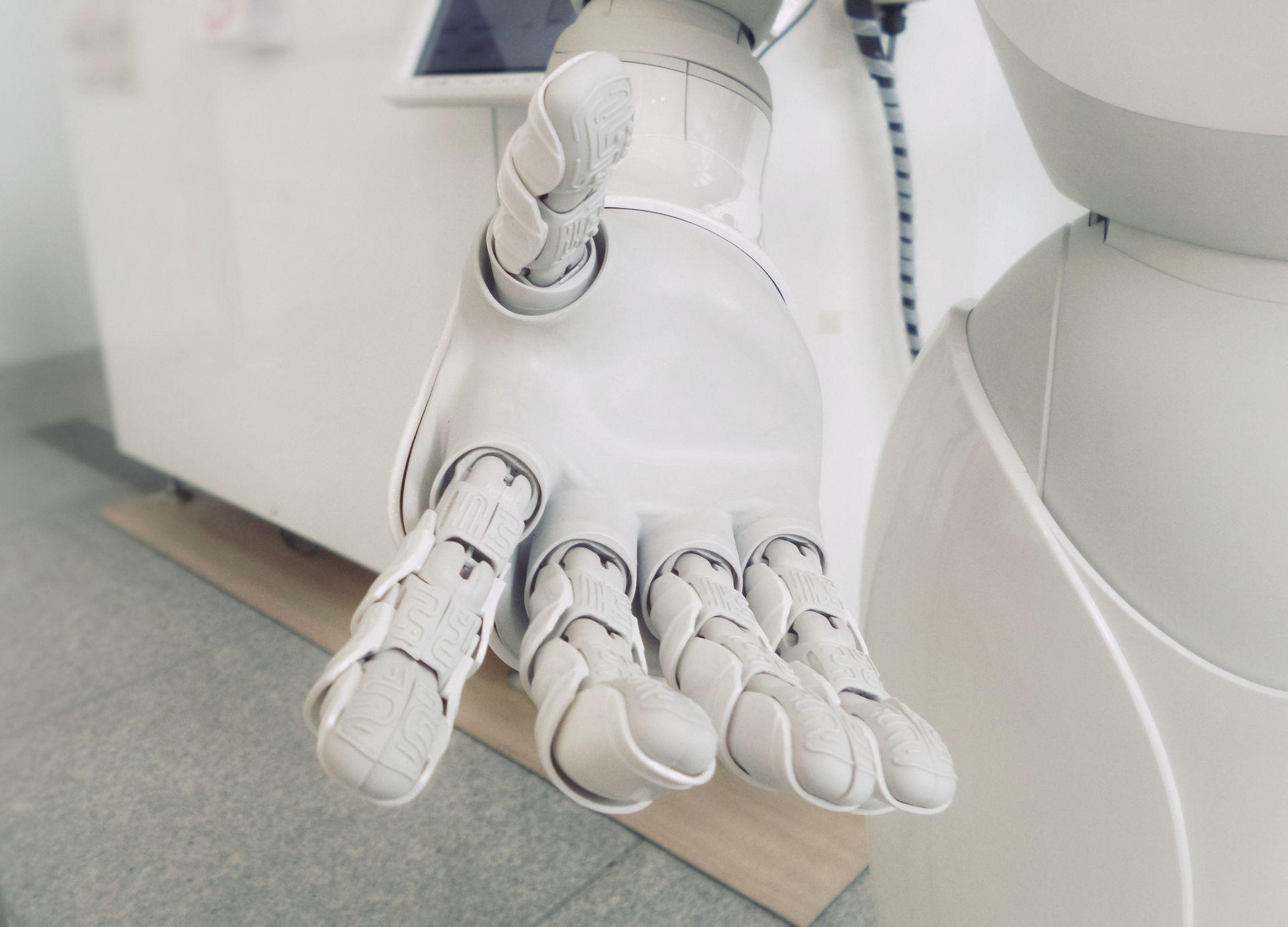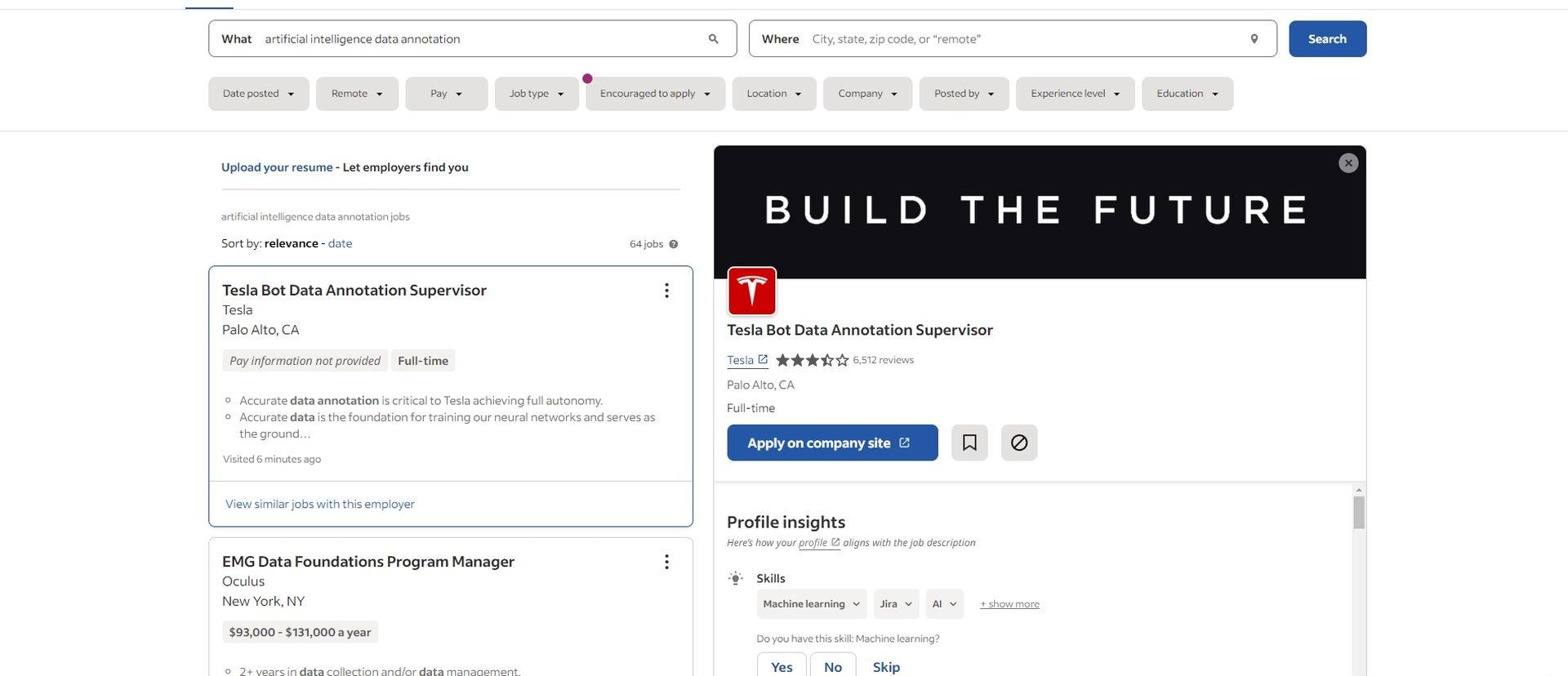AI annotation jobs are on the rise; naturally, people started asking what exactly is data annotation. You might have seen big companies like Tesla or Meta looking for specific titles, and today, we will explain everything you need to know.
AI annotation jobs: What is data annotation?
Imagine a world where computers can’t interpret the visual information around them without a little human assistance. That’s where data annotation comes into play. In simple terms, data annotation is the process of labeling various types of content, including text, audio, images, and videos. These labels provide crucial context for machine learning models, enabling them to make informed decisions and predictions.
The importance of data annotation becomes even more apparent when we consider the staggering rate at which data is generated today. By 2025, a mind-boggling 463 exabytes of data will be created daily worldwide. This explosive growth in data creation was highlighted even before the COVID-19 pandemic reshaped the role of data in our daily lives. Recent projections indicate that the global data annotation tools market is set to grow by nearly 30% annually over the next six years, with the automotive, retail, and healthcare sectors leading the charge.

Why does data annotation matter?
Data forms the foundation of the modern customer experience. The better a brand understands its clients, the higher the quality of their experiences. As businesses gather increasingly deep insights into their customers, artificial intelligence (AI) emerges as a powerful ally to turn this data into actionable strategies. According to Gartner, a renowned research firm, by 2022, an astounding 70% of customer interactions are expected to flow through technologies like machine learning applications, chatbots, and mobile messaging.
Data scientists dedicate a significant chunk of their time to data preparation, as revealed by a survey conducted by the data science platform Anaconda. This process involves rectifying or discarding abnormal or non-standard data points and ensuring the accuracy of measurements. These tasks are indispensable, as algorithms heavily rely on pattern recognition to make informed decisions. Faulty data can introduce biases and lead to inaccurate predictions by AI systems.
Data Annotation in AI & ML
At the heart of the Machine Learning (ML) journey lies the crucial step of data annotation. This process not only powers AI technologies but also imparts meaning to raw data, facilitating the training of ML algorithms. That is one of the main reasons AI annotation jobs are rising.
In the realm of AI, data annotation stands as an indispensable pillar. It is a human-led process that involves classifying and labeling data, allowing machines to comprehend it. Importantly, data annotation isn’t a one-time endeavor but a continuous effort throughout the entire Machine Learning lifecycle.
The significance of data annotation in AI & ML becomes evident as it enables machines to learn from data and apply that knowledge to new datasets. This learning process is known as supervised learning and finds applications in diverse fields such as image classification, spam filtering, and fraud detection.

Data Annotation as a Component of the Machine Learning Lifecycle
Data annotation plays a central role in the Machine Learning process by granting machines the ability to “see” and understand images, text, videos, and speech. It serves as a foundational step in the cyclical Machine Learning lifecycle, featuring distinct data annotation tasks in each phase. This iterative approach is instrumental in refining AI and ML models, ultimately leading to smarter, more capable machines.
Examples of AI annotation jobs
You will see AI annotation jobs all over the internet, and these titles play a huge role in companies’ success in upcoming projects. Below, you will find examples of two different AI annotation jobs from Tesla with descriptions:

Description: The Autopilot Data Annotation team is responsible for annotating images, videos, and other camera data. Accurate data is the foundation for training our neural networks and serves as the ground truth for Autopilot’s artificial intelligence. The team works cohesively with engineering teams to launch customer-facing releases: Navigate on Autopilot; Smart Summon; Traffic Light and Stop Sign Control. Accurate data annotation is critical to Tesla achieving full self-driving.

Description: The Tesla Bot Data Annotation team is responsible for annotating images, videos, and other camera data. Accurate data is the foundation for training our neural networks and serves as the ground truth for Autopilot’s artificial intelligence. Accurate data annotation is critical to Tesla achieving full autonomy.
Featured image credit: Alex Knight/Unsplash






